
I must thank my friend René Rivard for his suggestion to feature contemporary architecture of China in this post. Last year he visited China and was most taken with its architecture. Of course as those of you who have seen my posts on his recent paintings will know that the country was a great source of inspiration for his art.
Beijing National Stadium
The Beijing National Stadium also known as the Birds Nest was built by architects Jacques Herzog and Pierre de Meuron of Herzog & de Meuron of Switzerland under the direction of Li Xinggang in 2008. It cost $428 million. The steel beams were initially created to support and hide the mechanism for a retractable roof. Ultimately the retractable roof was removed from the design but the beams remained.

Nanjing Wajing Garden Chapel
This 200 square meter chapel is built along the Nanjing riverfront by the Chinese studio AZL Architects. Its outer shell is built of SPF (spruce-pine-fir) strips. The inner shell is more closed thus creating a diffused lighting. Its proportions are inspired by the Pantheon and traditional Basilica’s.
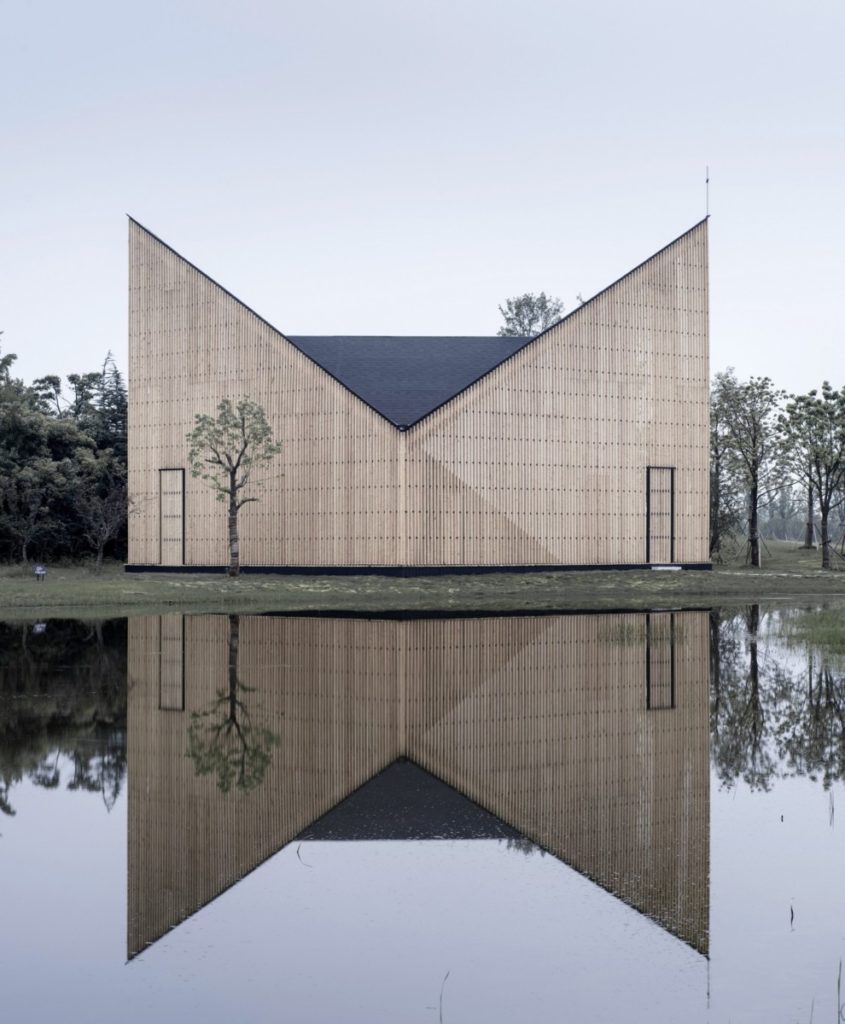
Cube Tube
The Cube Tube was built in Jinhua by SAKO Architects of Beijing. There are two buildings – Cube being an office building and Tube a restaurant. The design request included individual work spaces, airiness and good light a potentially challenging request which was achieved with great audacity.
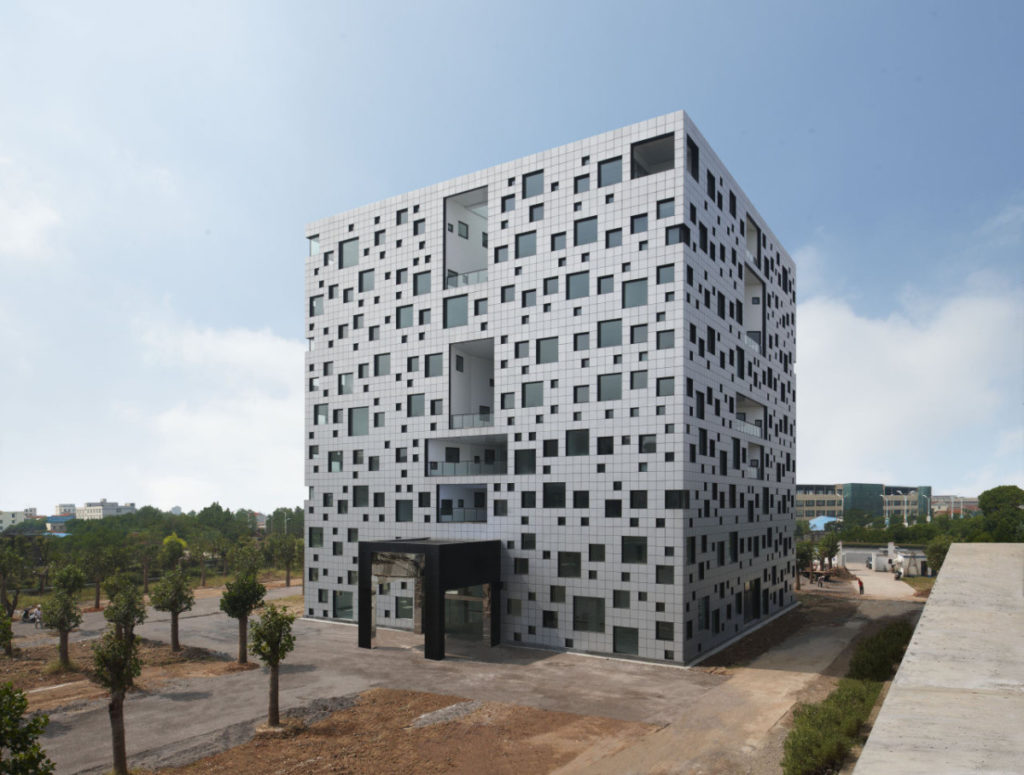
National Centre for the Performing Arts
The National Centre for Performing Arts known as the Giant Egg is a performance arts centre in Beijing. It was designed by French architect Paul Andreu and opened in 2007. The shape built of titanium and glass is surrounded by a man made lake. An underwater hall leads guests inside. I love the contrast it creates next to the Great Hall of the People.
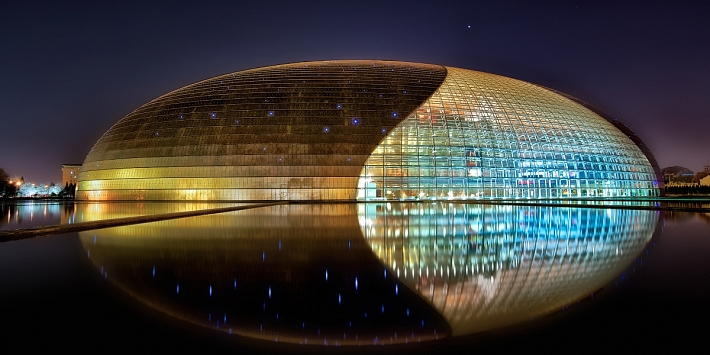
Galaxy SOHO
This stunning building by Zaha Hadid – Galaxy SOHO consists of four 15 storey buildings. Another mixed use building consisting of 12 storeys of office space and 3 storeys of stores. The five buildings seem to flow around an inner space designed to be as fluid as it is grand.
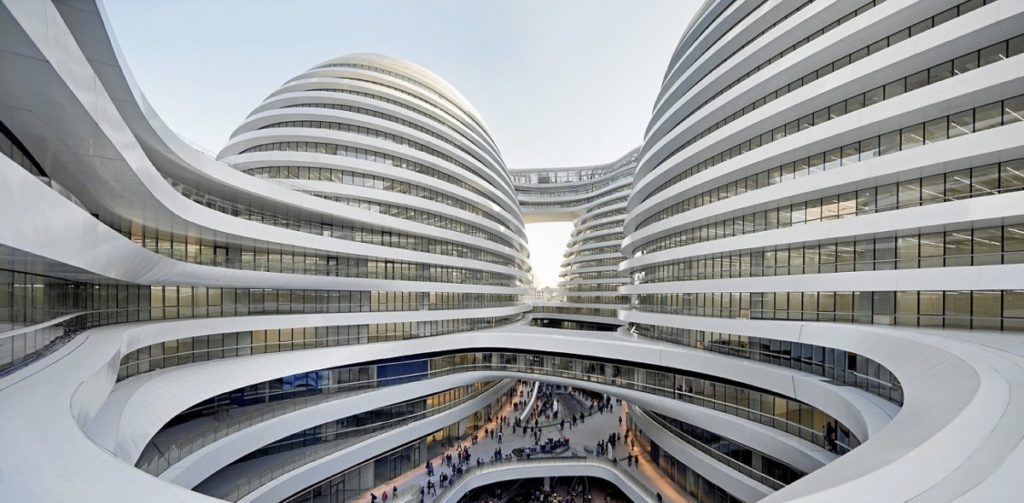
CCTV Headquarters
The CCTV Headquarters is a 234 metre, loop shaped 44 storey building. It is the headquarter for China Central Television. It was completed in 2012. Rem Koolhass and Ole Scheeren of OMA (Office for metropolitan architecture) were the architects in charge. As seemingly every building in China must have a nickname, this one is Big Pants.

Phoenix Island
Phoenix Island or Oriental Dubai is an artificial archipelago forming the island resort of Sanya.

Poland Pavilion
The Poland Pavilion was created by Marcin Mostafa and Natalia Paszkowska of WWA Architects for the Shanghai Expo in 2010. Its design was inspired by traditional Polish folk-art paper cutouts. It is principally made of cut plywood.
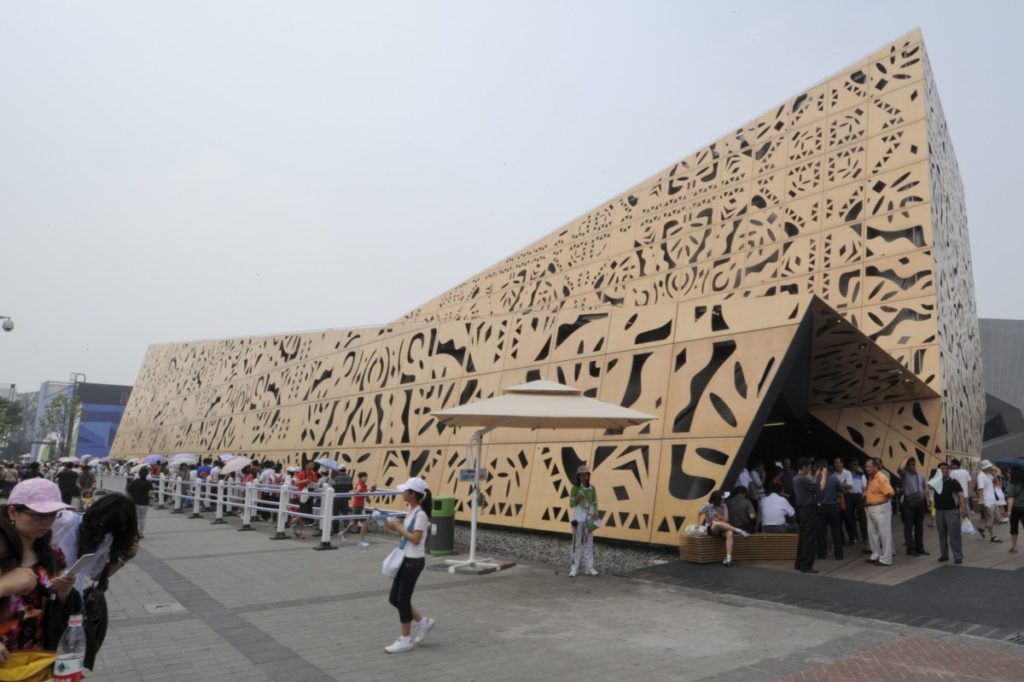
Prince Bay Marketing Exhibition Centre
The Prince Bay Marketing Exhibition Centre was designed by AECOM (Shenzhen) Ltd in 2016. It is located in Shekou. This exhibition centre was designed to reflect successes of the past and optimism of the future.
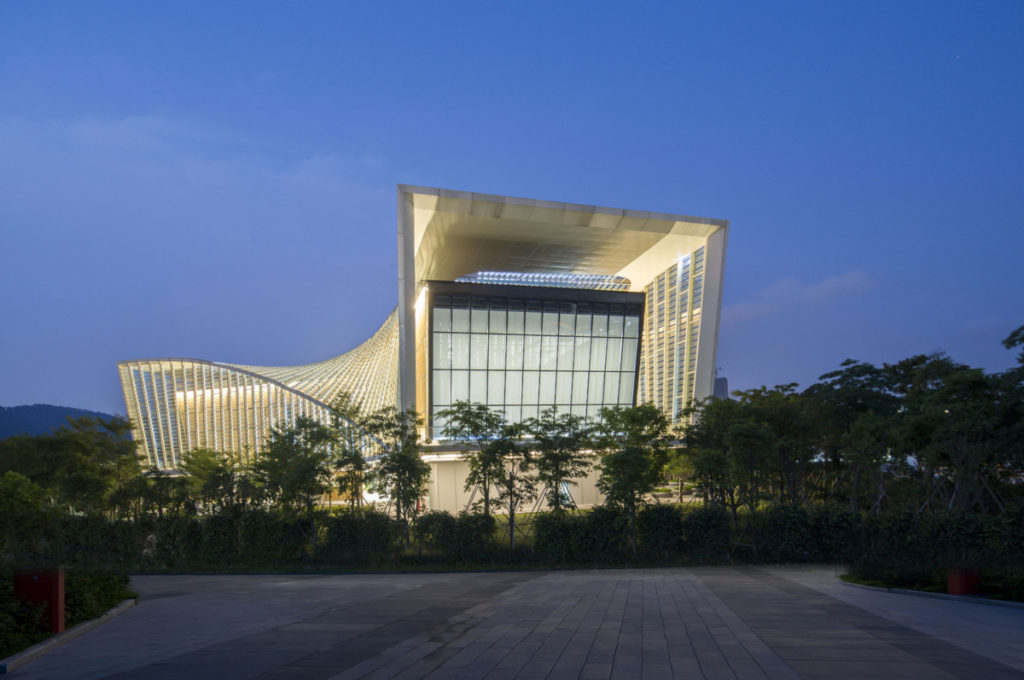
Sheraton Huzhou Hot Spring Resort
The Sheraton Huzhou Hot Spring Resort is a luxury hotel and resort in Huzhou. It has been nicknamed the Horseshoe Hotel or the Doughnut Hotel. The 27 storey structure is adjacent to Lake Tai. It was conceived by Yansong Ma and constructed in 2013. It’s exuberance is created to showcase China’s rise as a superpower. In case anyone missed the message the interior lobby is illuminated by 20,000 pieces of crystal, the walls accented by Tiger’s Eye and the floor Afghan White Jade.
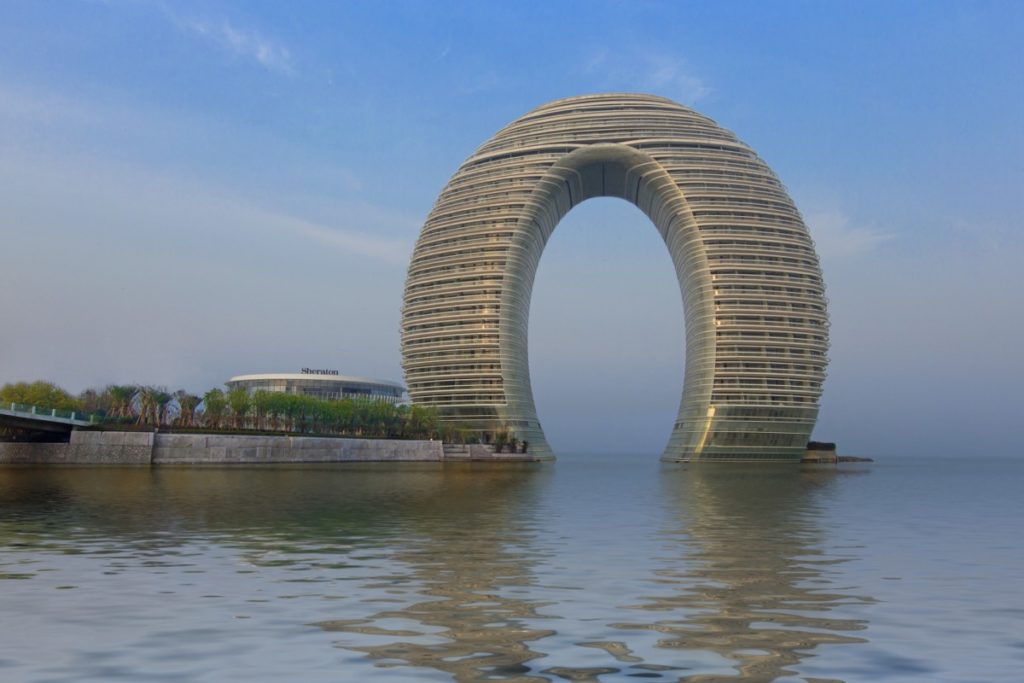
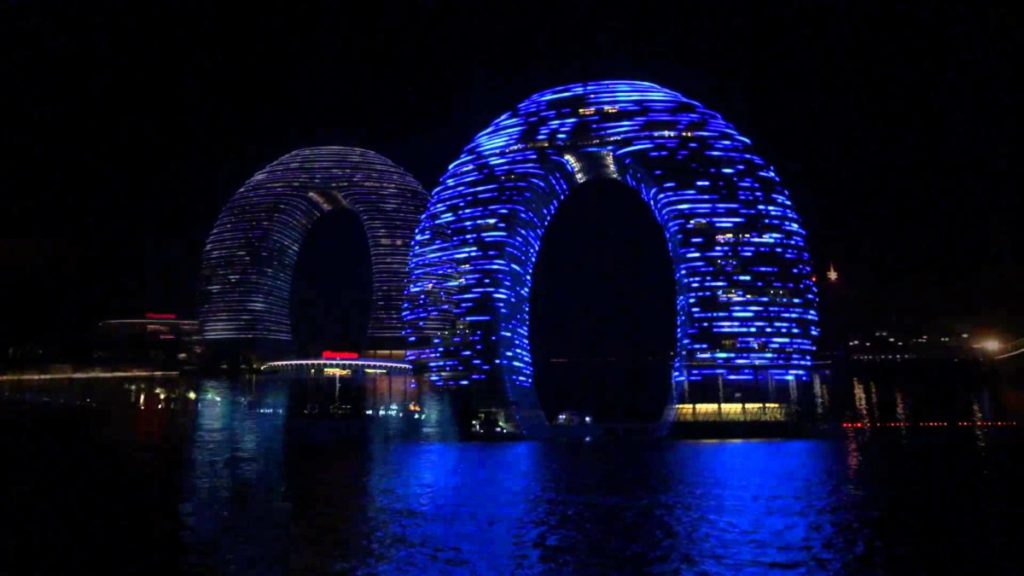
Horizontal Skyscrapper – Vanke Centre
The Horizontal Skyscrapper was designed by Steven Holl in 2009. It is a mixed use building in Shenzhen. It consists of offices, a conference centre, a restaurant, an auditorium, a hotel, apartments and a large public park. Designed to seem constructed around a sea that has subsided – its appearance is one of a building floating on 8 pillars.
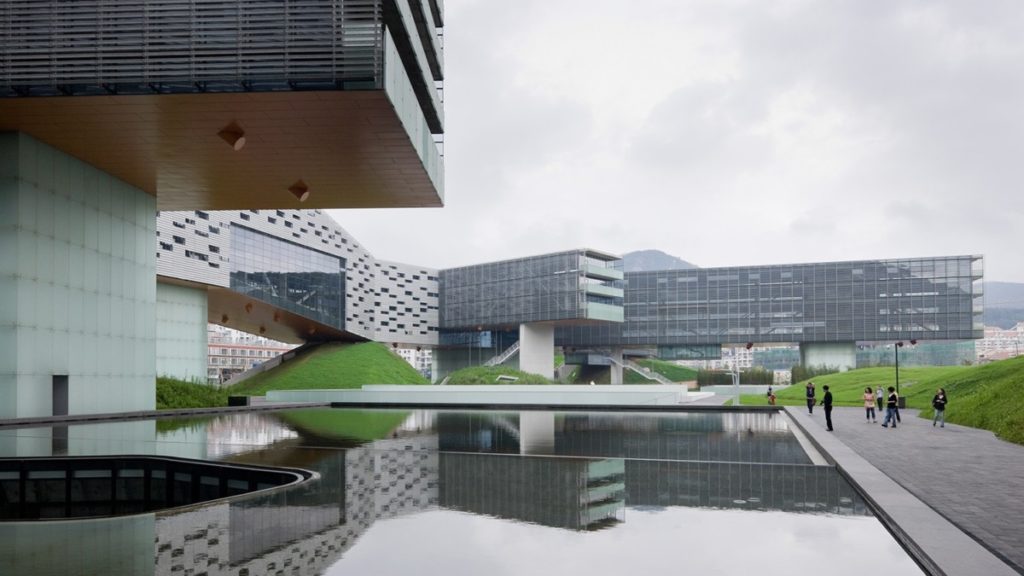
Wuxi Grand Theatre
The Wuxi Grand Theatre is a large building rising 50 meters like a sculpture. It was designed in 2012 by Finnish architect Pekka Salminen. It’s location on a man-made peninsula its location can be compared to that of the Sydney Opera House. Thousands of LED lights on the wings can change colour according to the mood of the performance inside.
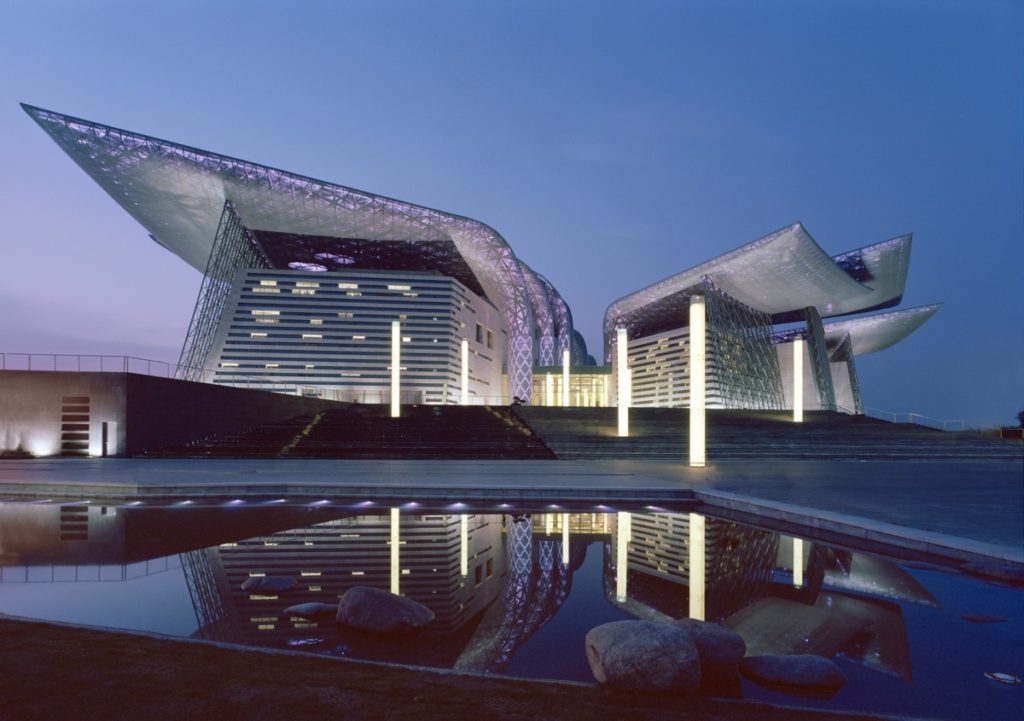
Vanke Triple V
The Vanke Triple V building was built in 2011 by the Ministry of Design. It contains a gallery, a tourist information centre, and a lounge for discussion. Despite it’s exuberant appearance its creation was quite fundamental.


[…] as well as Büro Ole Scheeren Group. He now lives in China. He was previously featured in a post Architecture – Asia – China. CCTV Headquarters 2012, Beijing, China Landmark Tower 2012, Kuala Lumpour, Malaysia […]